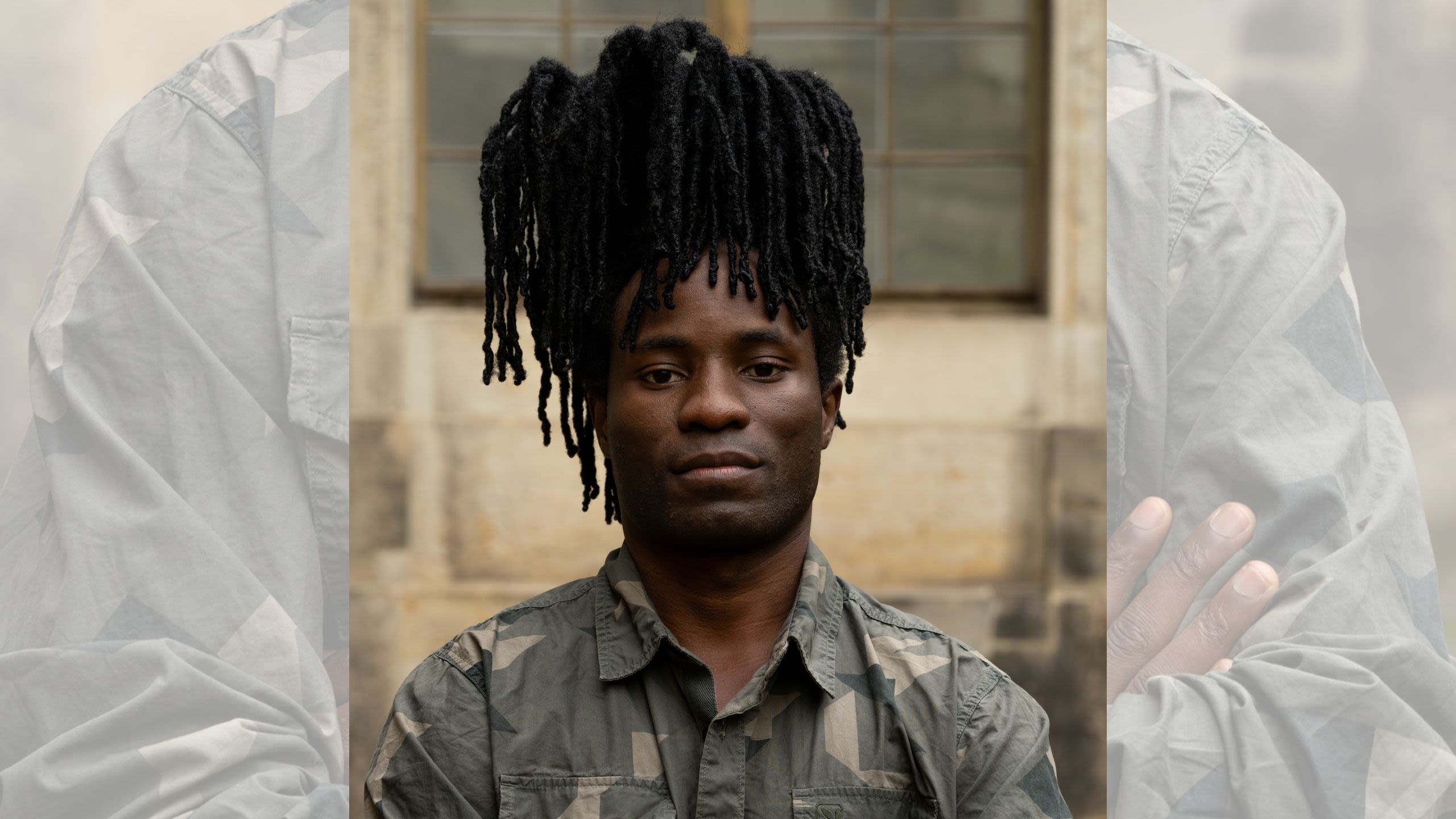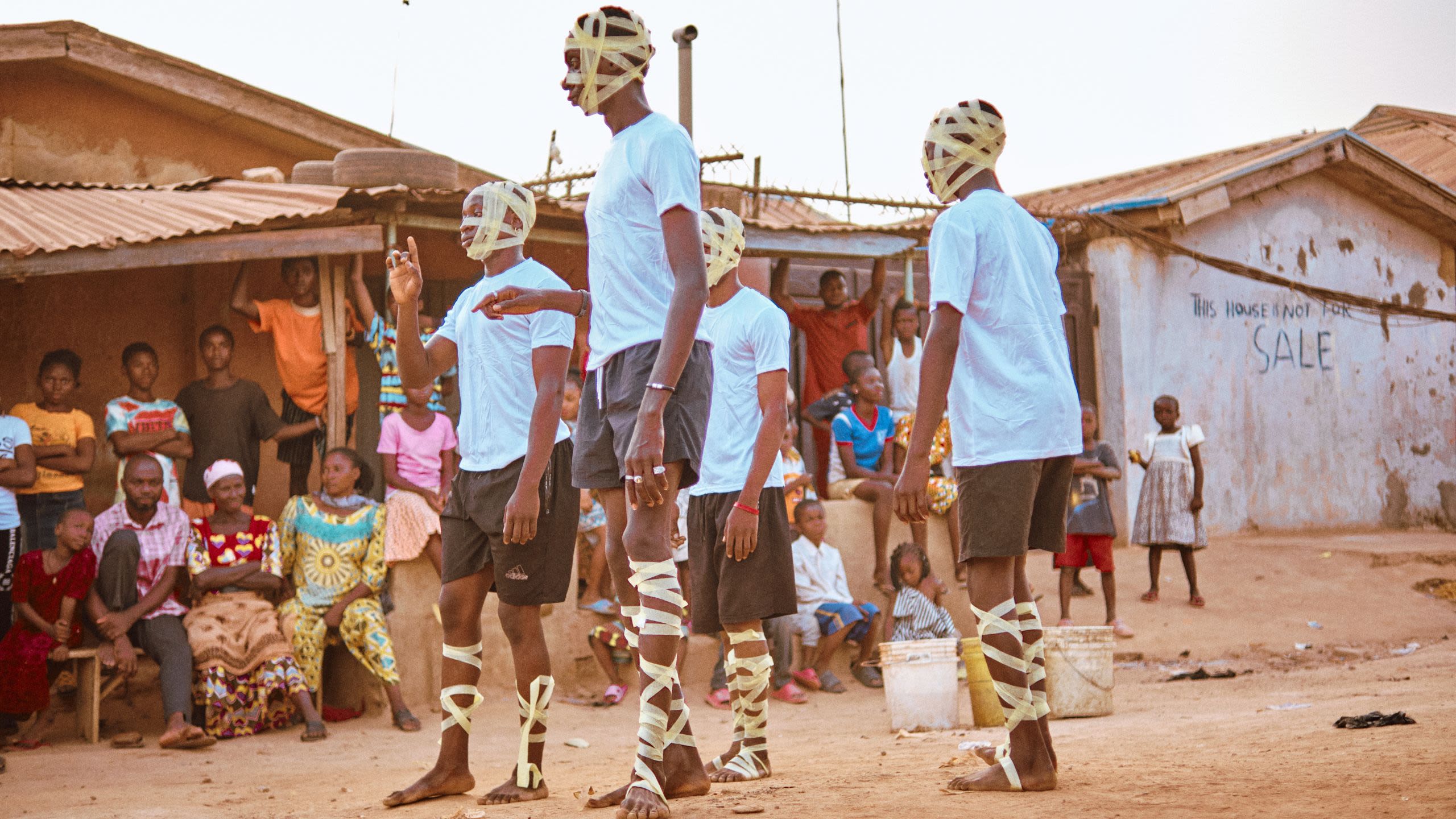Robert Ssempijja, encounters in art and physics
Contemporary artist, dancer and researcher Robert Ssempijja was selected as the 2024 Cavendish Arts Science Fellow after a wide-reaching international open call. We sat down to discuss his approach to art and what he hopes to achieve during his time in Cambridge.

I met Robert Ssempijja over a cup of lemon and ginger tea on a pale spring morning in Cambridge’s West Hub. Ssempijja is an artist who uses dance to express ideas that cannot easily be spoken, exploring how our thoughts and secrets are revealed by our bodies. He was born and grew up in Uganda and has been creating art for as long as he can remember. “I cannot tell how I came into art. Since I was young, when I first started understanding things, I was doing art.”
Ssempijja’s first exposure to art came while in the care of a Ugandan organisation that took him in after he and his mother ended up living on the streets, sleeping in parked cars. “I would pay the person who was supposed to be looking after the car park, and if I could not afford to pay, I had to watch the cars for him”. The organisation had a varied art programme that covered everything from painting, screen-printing and graffiti writing to music. “As a kid you had to choose one of these activities to get involved in, and at a certain point I ended up choosing dance, because I also used to do a lot of break dancing. So, I do not know if I found art, or art found me.”
For Ssempijja, his art is a way of expressing ideas that he might feel unable to say out loud. “There are some things that we want to talk about, but we are afraid to talk about. Growing up in Uganda I could not go on Facebook or in my community and say ‘I don’t like the President’. So how do I talk about something that I want to say but I can’t say out loud? I can say it with my work.” Ssempijja’s developed numerous pieces tackling subjects from colonialism and decolonization to futurism and space exploration, often working with choreographers from other countries and cultures. He’s performed his work all over the world, including in South Africa, Senegal, Uganda, Morocco, Germany, Sweden and the United States.
By his own admission, he had almost no knowledge or previous interest in science but applied to become the 2024 Cavendish Art Science Fellow after an advert kept cropping up on Instagram. “One thing that led me really to do this, is that when I read the application it said ‘you don’t need to have any background in physics’ and I thought ‘that is me! I have no idea about physics’. So I did it. And when I received the email saying I was shortlisted I thought ‘I think they made a mistake!’” he told me with a laugh.
"I do not know if I found art, or art found me."

Since arriving in Cambridge, Ssempijja has had numerous conversations with physicists from around Cambridge. “The first one that struck me, was when I met someone who was studying the Sun. And I thought, how come though I grew up in a place where the Sun is always there, I have no idea about the Sun, and someone here who sees the Sun for two hours a year...” he grinned, gesturing at the grey skies above West Cambridge “...is so interested in it!” He continued, “that made me think a lot. That sometimes you can have a thing in abundance, and you don’t care about it at all.”
However, at first Ssempijja felt unsure if he had made the right decision coming to Cambridge, a place that felt alien and forbidding. “I thought, I’m not sure why I am here”. But it was a conversation with a physicist about uncertainty that changed his mind. “He said to me, the uncertainty that you create as someone without an academic background coming to an academic space, it takes us out of our comfort zones”. From then on Ssempijja has seen his time in Cambridge as an opportunity to bring new perspectives to the people he interacts with, as well as to challenge himself to explore areas where he feels uncertain. “Uncertainty is a place of unknowing, so when you are in this place you are confused, it brings a lot of chaos. So, I thought, how can I bring uncertainty to Cambridge?”
The work that will emerge from Ssempijja’s time in Cambridge is still evolving, but he has tentatively given it the title of Bound States. In it, he hopes to explore how we can break out of the narrow lanes we travel down and explore new frontiers. “When you talk to physicists and they tell you what they are doing, you’re like wow! You are amazed. But the moment you ask them something outside of their area they’re like ‘I don’t know’. Sometimes it’s very shocking, because you have to understand that people in the outside world assume an academic knows everything. He has a PhD! But talking to people, I started to think, you are so closed in to your box. Maybe you should look around and see what else you can pick up. To not always use the same methodologies as before.”
“As an artist that is something that I’ve learnt to do” he continued. “Six years ago, I started getting bored with dance and this boredom sparked me to venture into other genres. I started doing installations, playing with materials and objects, to see if they could give me another perspective, to see what they can tell me about the present, the past. That is also something that became visible in my dance and my art. And that came because I was trying to look outside my bubble. I think physicists need something like that. Not just to be focussed on ‘how do I split this atom?’” he said breaking into a laugh.
“...the uncertainty that you create as someone without an
academic background coming to an academic space, it takes
us out of our comfort zones”.

This is an approach he also wants to take back to Uganda. “One thing I want to do with my work, especially for people back home, is to make people think, make people question, make people view Uganda in a different way. How do we start to imagine a country beyond our current capacity for imagination, and the future that we can bring to it.” He recounts a conversation with his mother, who is deeply religious, about the existence of God. ”It created chaos, she couldn’t believe that I was questioning God. I said to her, ‘it’s not that I don’t like what you taught me as a young boy, or the way you raised me, but I’m questioning what you taught me because I want to find out if we can create a new norm. Maybe we can have a different life outside of religion.’”
I ask him if Cambridge too, could benefit from re-examining some of its stranger traditions, the gowns, the Latin graces, the strange ceremonies. “Why are you creating trouble for me?” he smiles, “but yes, I’ve noticed that Cambridge has a lot of very old traditions that started before people came here from other backgrounds. But now we’re living in a time where we have students from different backgrounds, where you have people like me who have nothing to do with academia coming here, so in order for them to feel welcome, to feel included, there are some traditions that need to change.”
The Cavendish Arts Science Fellowship is made possible through a partnership with Girton College and with the generous support of Dr Una Ryan. For more information on Ssempijja and the Cavendish Arts Science programme, please visit:
Banner image: Franke Jacob